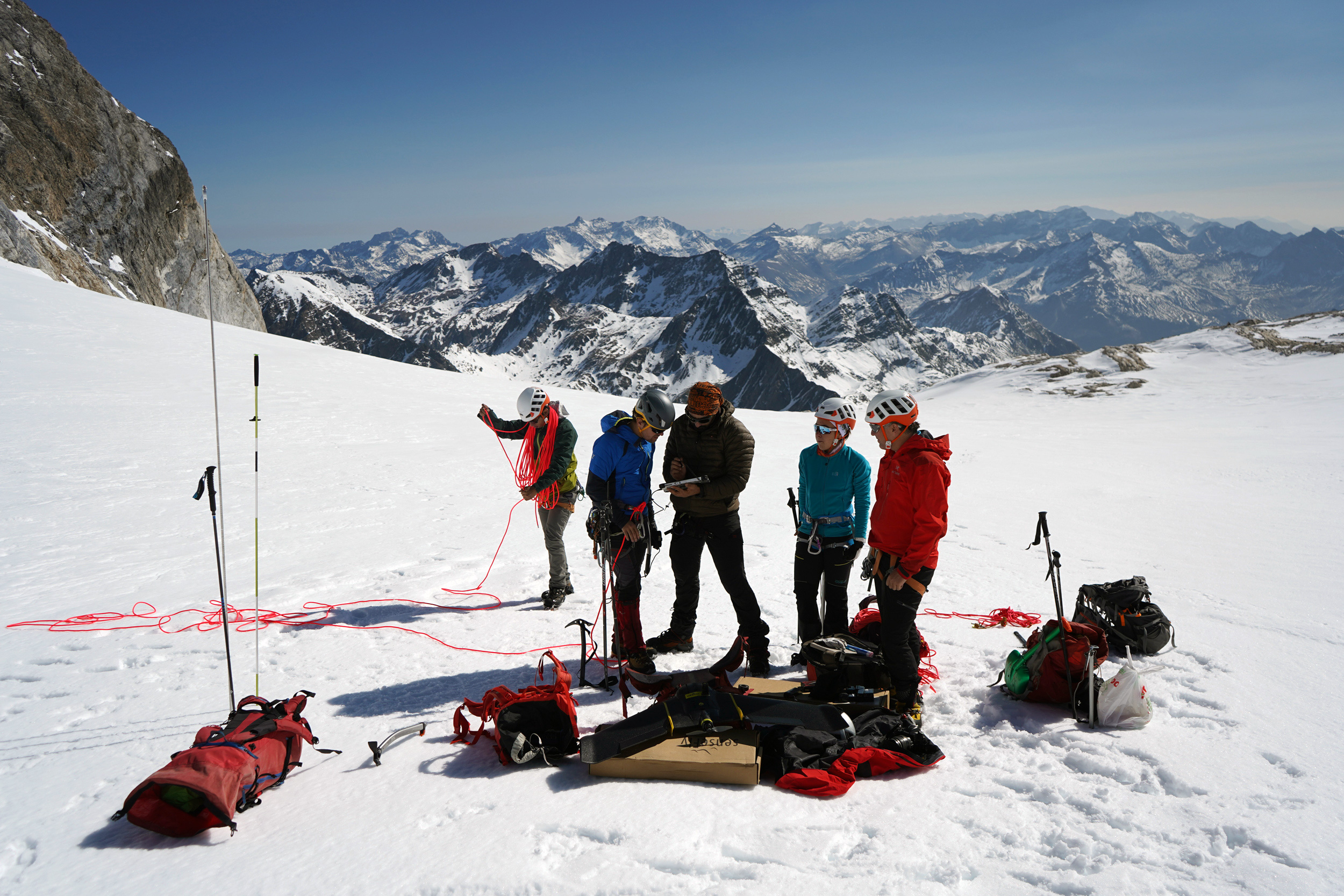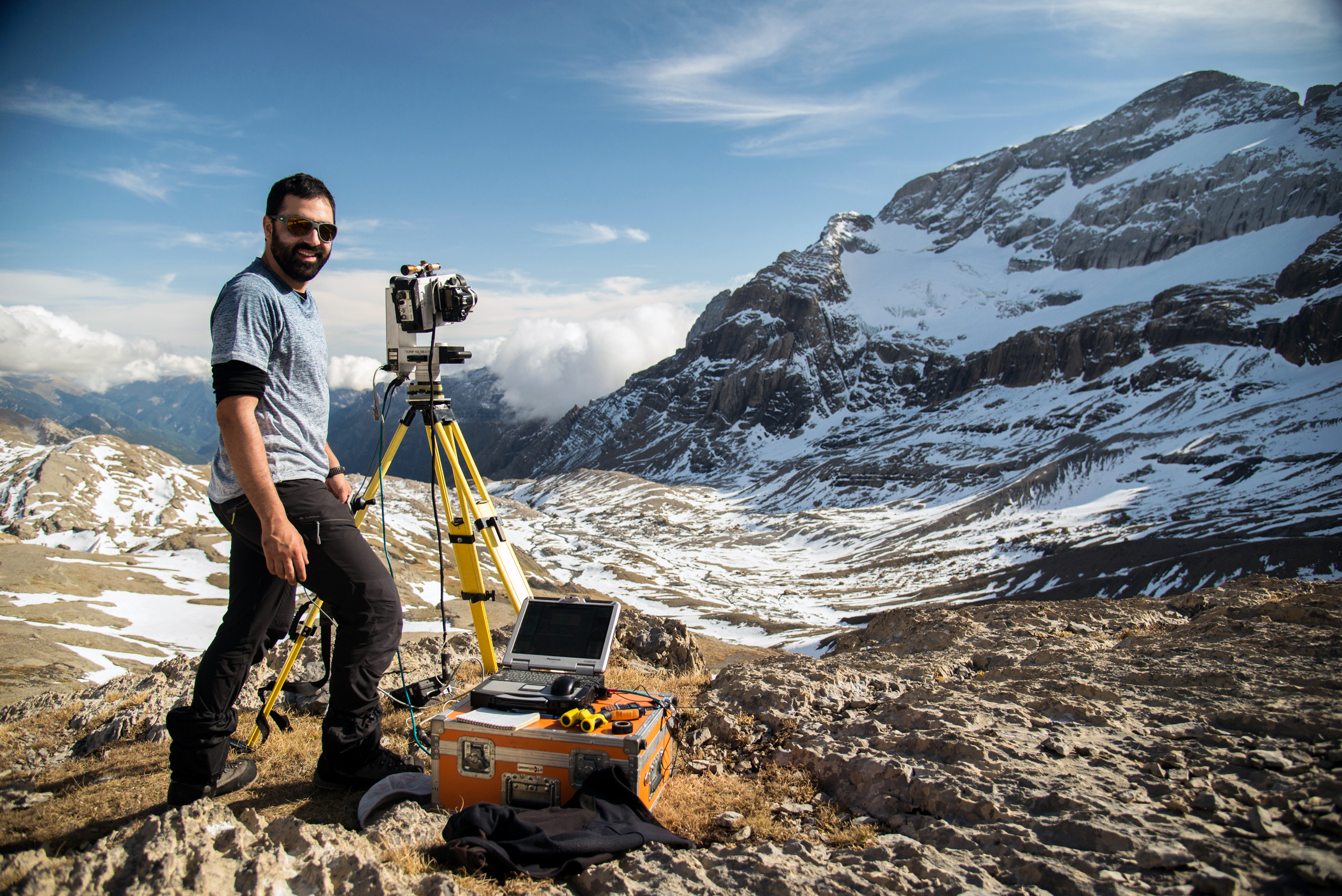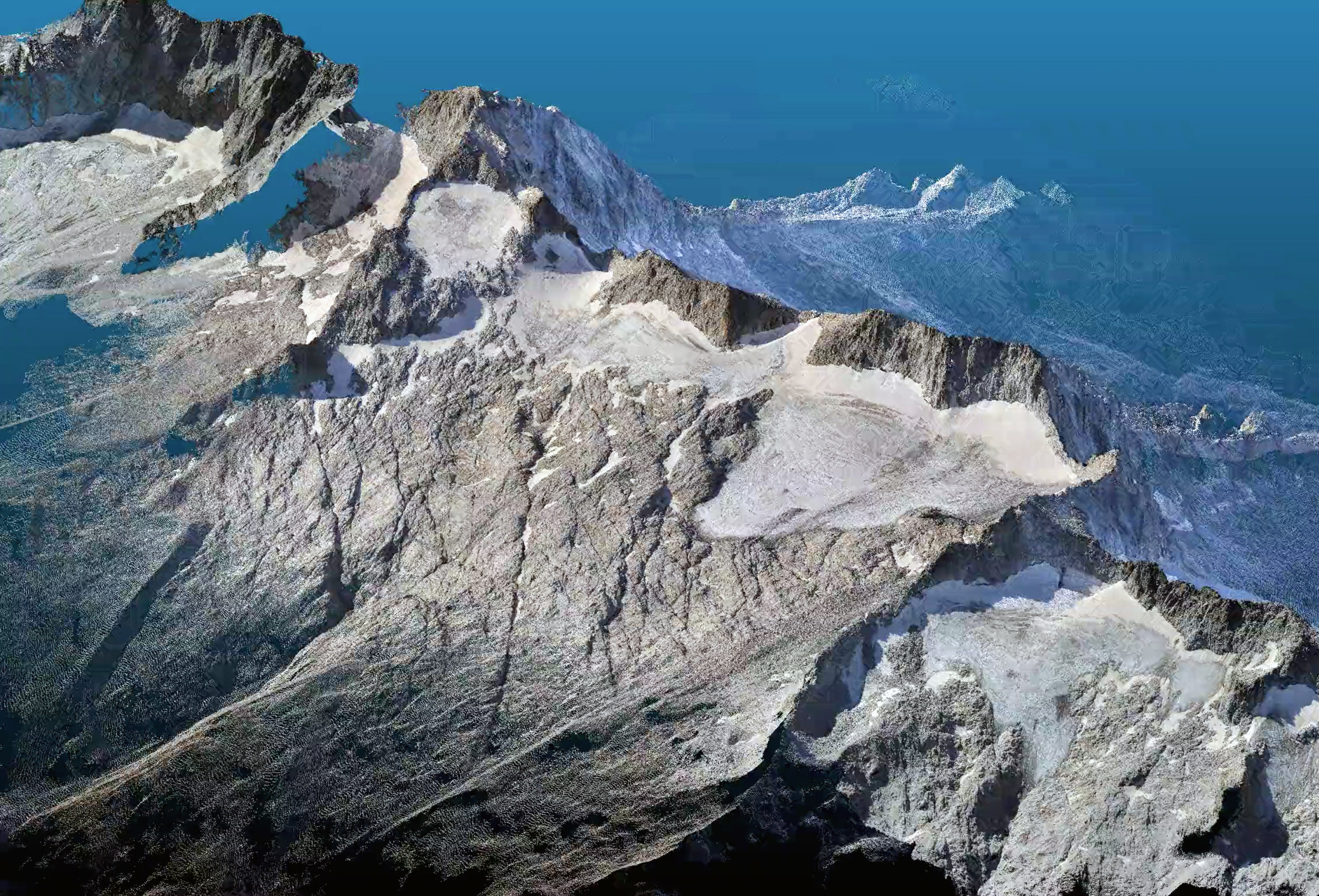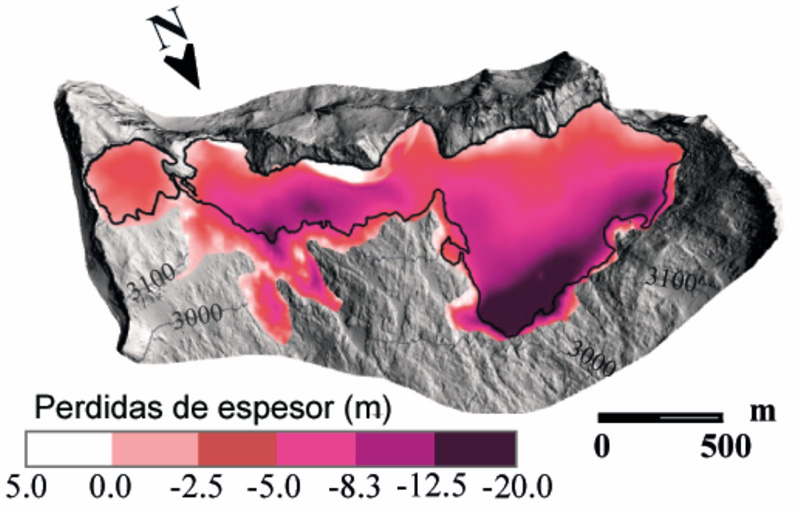The results of a study, in which various research centres in Spain and France have participated, show that the rate of ice reduction has remained similar since the 1980s. In the last ten years, the thickness of the ice of some glaciers has decreased by an average of 10 metres, exceeding 20 metres in some places, and by up to a fifth of their surface areas.
Pyrenees glaciers under scrutiny
An international study with the participation of two researchers from the UPV/EHU-University of the Basque Country reveals that these glaciers are continuously losing thickness and surface area
- Research
First publication date: 30/09/2021

An international study, led by the Pyrenean Institute of Ecology (IPE-CSIC), has analysed the changes in surface area and thickness recorded between 2011 and 2020 of 17 of the 24 glaciers located in the Pyrenees. The results of the study, published in the Geophysical Research Letters journal and entitled 'Toward an ice-free mountain range: demise of Pyrenean glaciers during 2011-2020', show that, far from a slowdown being observed in the melting rate of the glaciers, the rate of ice loss has been similar since the 1980s.
The research was partially funded by the OPCC ADAPYR (Interreg-POCTEFA) project and the Hidroibernieve project of the Spanish Ministry of Economy and Competitiveness; researchers from various research centres in Spain and France, including CESBIO and LEGOS in Toulouse, the MORAINE glaciology association, the University of Zaragoza, the University of Valladolid and the UPV/EHU, collaborated in it. Specifically, Eñaut Izagirre-Estibaritz and Ibai Ieltxu Rico-Lozano from the Department of Geography, Prehistory and Archaeology of the UPV/EHU, and who are both members of the Basque Government's consolidated research group 'Hydro-environmental Processes (IT1029-16), participated in the work.
During the period studied, the glacier-covered area diminished by 23.2%, while its thickness decreased by an average of 6.3 metres, in some places even exceeding a thickness of 20 metres. An example of these changes are those observed on the Aneto glacier, whose losses are estimated to be 24.3% in terms of its surface area, resulting in an average thickness of 8.5 metres, with decreases of up to 21 metres in some areas. Among the most affected ice masses are the Ossoue glacier in the Vignemale massif, which has sustained a 25.7% reduction in surface area and average losses of thickness of 10 metres; and the Taillon glacier, which has lost an average of 11.6 metres, exceeding 23 metres in its central area.
The scientists point out that, although the climate conditions have varied little among the areas where the glaciers are located, given that the climate has varied in a similar way throughout the Pyrenees, the evolution of the ice has, by contrast, been heterogeneous during this period. "The smaller Pyrenean glaciers with a surface area of less than 10 hectares, such as Barrancs in the Maladeta massif, or Llardana in the Posets massif, are tightly controlled by the local topography. This can be deduced from the contrast between the losses of their surface areas and those of their thicknesses. However, the larger glaciers are predominantly influenced by the climate conditions of this mountainous region, so that the larger glaciers, such as those of Aneto, Maladeta, Ossoue and Monte Perdido, evolve in a similar way with equivalent losses in surface area and thickness," the researchers explained.
In this respect, the authors of the study stress the importance of having maps that show the observed losses in detail in order to monitor and understand the reasons why glaciers are becoming progressively more confined to protected areas (characterised by less solar radiation and greater snow accumulation). They predict that "in these areas, the glaciers may degrade more slowly, but in all cases they will be doomed to a progressive demise of the dynamics that characterise them".
It is worth pointing out that the Pyrenean glaciers are the largest in southern Europe and their survival is threatened by climate change, so the results obtained in this work provide a foretaste of what may happen in other more northerly European mountain ranges such as the Alps, where glaciers are also displaying a clear retreat.
Enhanced imaging techniques
The variations in glacier surface area have been calculated using high-resolution images captured by different satellites with optical sensors, while thickness changes have been determined by comparing 3D surfaces provided by drone flights (year 2020) and those obtained with an airborne LiDAR sensor (year 2011). The use of this methodology has huge potential, but its application is complex given the characteristics of the areas monitored, in terms of both flight and access. As IPE-CSIC researcher Jesús Revuelto explained, "it is important to prepare observation campaigns in great detail by designing the flight area, checking the weather forecast and coordinating the whole team".
For his part, UPV/EHU researcher Eñaut Izagirre highlights the importance of these new tools in the study, since "thanks to the precision and high resolution of the drone observations, we have been able to determine, in great detail, the current state of the surface of the glaciers on the scale of the entire mountain range". According to the authors of the paper that has just now been published, the combination of drone flight and LiDAR techniques has made it possible to quantify glacier surface variations with an uncertainty of less than 0.4 metres.
Bibliographic reference
- Toward an Ice-Free Mountain Range: Demise of Pyrenean Glaciers During 2011–2020
- Geophysical Research Letters. Volume 48, Issue 18. 20 September 2021
- DOI: 10.1029/2021GL094339
Image gallery
-

The image shows the IPE-CSIC group finalizing preparations for the drone flight on the Ossoue glacier, Vignemale massif. Photo: Eñaut Izagirre. UPV/EHU. -

Jesús Revuelta, from the IPE-CSIC, scanning the Monte Perdido glacier with the terrestrial laser scanner. Photo: Francisco Rojas. -

3D model of the Aneto glacier in 2020. -

3D view showing the change in elevation of the surface of the Aneto glacier during the period 2011-2020. The black line delimits the glacier area in 2020.


